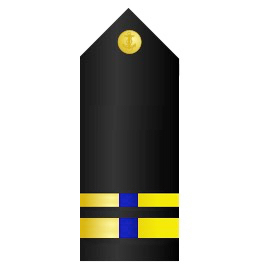authored by Nicholas Nemeth and Joshua Rasor
In the beginning, Warrant Officers ranked between Officers and Enlisted. Chief Warrant Officers ranked with but after Ensigns. Lieutenant Norman R. Van Der Veer, U.S. Navy, wrote:
After six years from date of Warrant, boatswains, gunners, machinists, carpenters, sailmakers, pay clerks, and pharmacists, if duly qualified, shall be commissioned chief boatswains, chief gunners, chief machinists, chief carpenters, chief sailmakers, chief pay clerks, and chief pharmacists, respectively, to rank with but after ensigns, and shall be designated commissioned warrant officers (Van Der Veer, 1918).
Before numbered paygrades were established (O-2, CWO2, E-2, etc.), the Navy based pay on the paygrade noun name (Lieutenant, Warrant Officer, Seaman, etc.). In order to retain CWOs, the Navy offered pay raises based on their Lieutenant and JG equivalent. Lieutenant Norman R. Van Der Veer, U.S. Navy, wrote:
All commissioned warrant officers on the active list, with credible records, after six years from date of commission, receive the pay and allowances of a lieutenant (junior grade); and all commissioned warrant officers on active list, with credible records, after 12 years from date of commission, receive pay and allowances of a lieutenant (Van Der Veer, 1918).
Similar to the present, a seasoned CWO would earn much more than an Ensign even though they would rank with but after Ensigns. During this time, Officers would retire at the next higher paygrade. Since Chief Warrant Officers ranked with but after Ensigns, they were retired as Lieutenant Junior Grade. Lieutenant Norman R. Van Der Veer, U.S. Navy, wrote:
Commissioned warrant officers as are, or may be, retired with the rank of lieutenant (junior grade), take precedence next after officers have the rank of lieutenant (junior grade). Such warrants are retired with the rank of the next higher grade take precedence with other officers of the Navy next after ensigns (Van Der Veer, 1918).
The 1905 Uniform Regulations prescribed specific insignia for CWOs that retired as Lieutenant Junior Grade. This would allow retired CWOs to wear the correct uniform should the occasion arise when in retirement. The shoulder boards looked similar to this graphic:

Chief Warrant Officer retired with the rank of Lieutenant Junior Grade.
References
Van Der Veer, N. (1918) The Bluejackets’ Manual, (6th ed.). New York: Military Publishing Company.
U.S. Navy (1905) Regulations Governing the Uniform of Commissioned Officers, Warrant Officers, and Enlisted Men. Washington D.C.: Government Printing Office.


